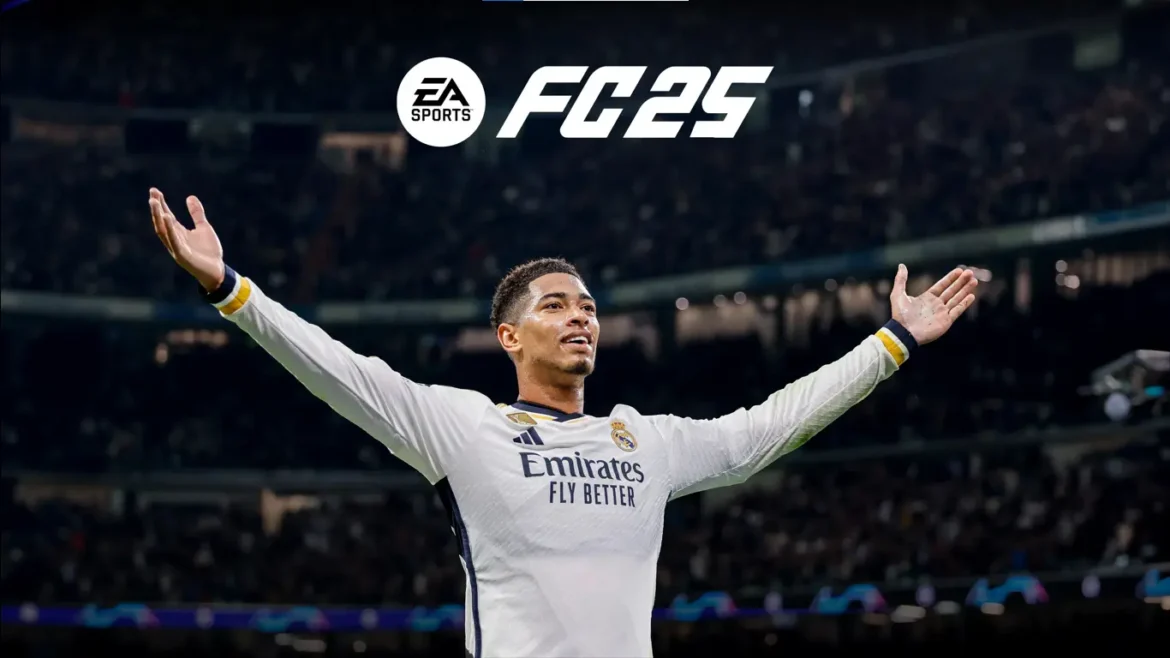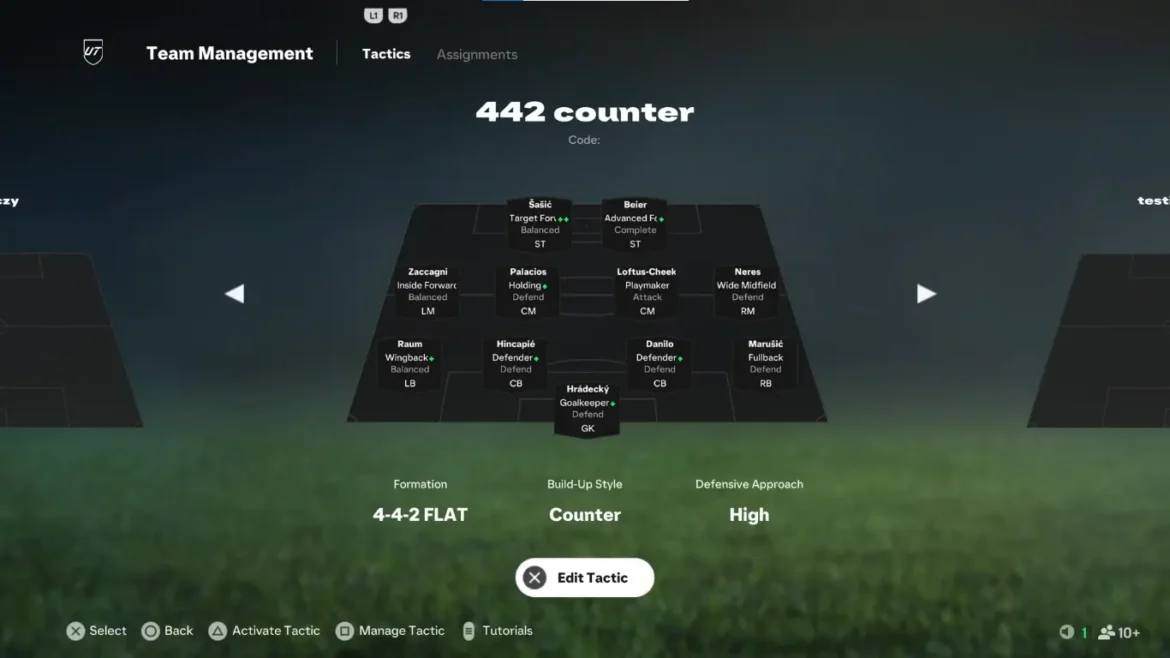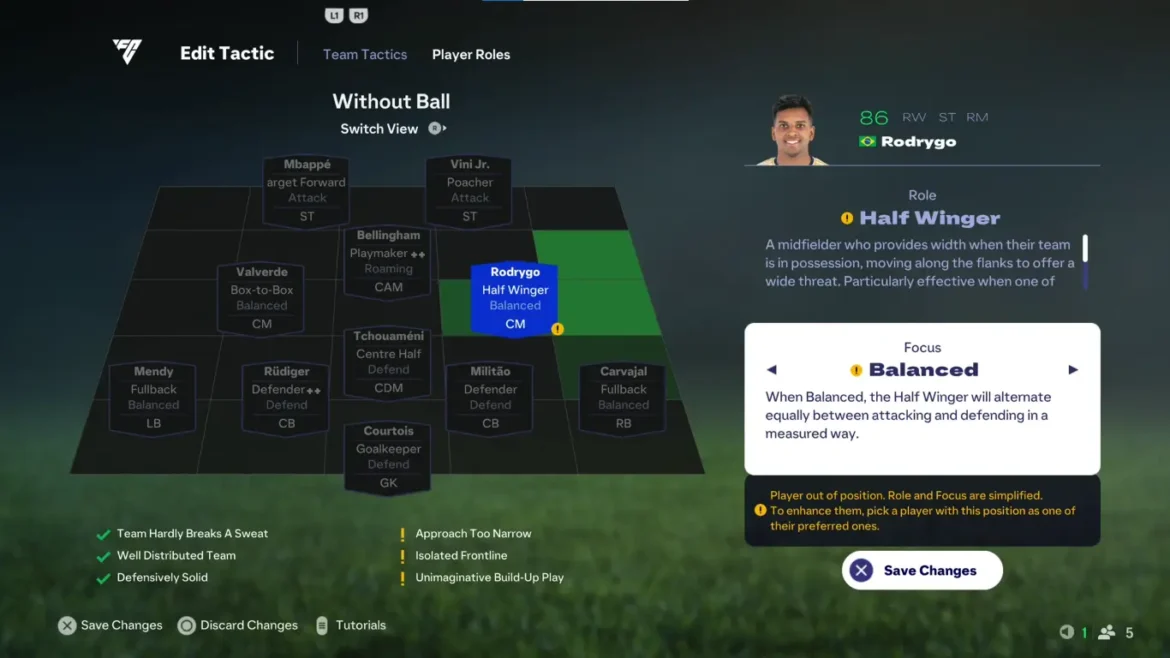Release Date : 27 September 2024
Developer(s) : EA Vancouver, EA Romania
Publisher(s) : EA Sports
Platforms : PS4, PS5, Xbox One, Xbox Series X/S, PC, Nintendo Switch
FIFA is back! After a year of transition, when it changed its name to EA Sports FC, the legendary football simulation is back on the scene with a new game mode, Rush. A tribute to Gerard Piqué’s Kings League to reinvent itself and raise interest in the title. Here’s our review of the gameplay and content of this latest release.
Table of Contents
French League Shines, Italian League Struggles

Like every season, all eyes are on the list of licenses to check if FIFA’s latest release includes new official teams, or if new players or stadiums are accurately represented. Apart from the new men’s Champions League, there are no major additions to the list of official teams and competitions.
For those who missed it, this competition no longer starts with a group phase, but with a ranking phase, a sort of 36-team mini-championship lasting 8 days before the knockout phase. Italian fans will surely be disappointed, because even though EA has recovered the licenses for AS Roma, Napoli, Lazio Rome, Atalanta Bergamo, and above all the two Milan clubs, AC Milan and Inter, still don’t have the right names, logos and authentic jerseys. A persistent blow for one of Europe’s 5 major leagues.
On the other hand, the French league is in the spotlight in EA Sports FC 25. The game introduces a new stadium, the legendary Stade Bollaert-Delelis of RC Lens, one of the greatest arenas in France. A good point, which also applies to the modeling of players in the French league. Most of the Ligue 1 players have had their faces faithfully modeled, and not just the biggest stars. Immersion is also enhanced by another excellent playlist, to complement the same flat menus from last season.
Tactical Tweaks, Familiar Gameplay
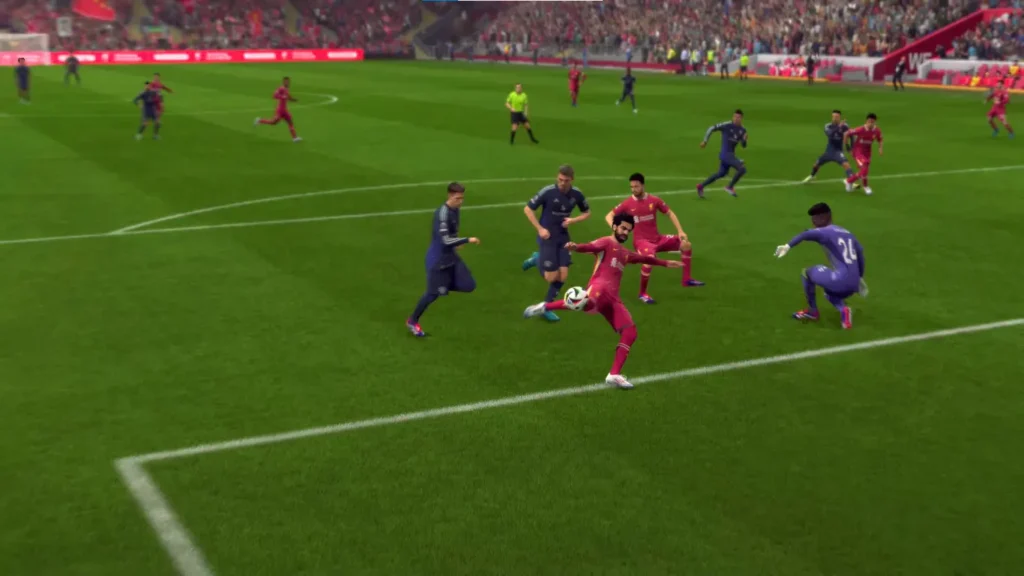
Unfortunately, if you’re looking for revolutionary gameplay in this new EA Sports FC release, you’ll have to pass. TV animations and slow-motion are always immersive and very realistic, thanks to the Frostbite engine and Hypermotion technology, we also noticed a slight improvement in the game’s passing and deep runs at launch, but attacking, build-up, pressing and defensive phases remained pretty much the same as in previous seasons.
You need to take your time and act as an architect in the midfield to pose a threat on one side, while being patient and not rushing into the box on the other to avoid taking a goal. Next, it’s up to you to learn or continue to master the playstyles, power shots, and finesse shots, so you can maximize the potential of the players at your disposal.

Announced as one of the new features, FC IQ brings a little variety to the game, but only for players who prefer advanced tactics and preparations. It’s a new tactics and positioning system based on three main components: Team Tactics, Smart Tactics, and Player Roles. Team Tactics are rather classic to what we know from FIFA, and include defensive approaches, tactical set-ups, and formations defined before the match. Smart Tactics are selected during the match via your directional pad, and are much more consistent than usual, with tactical suggestions during the match for beginners. This more comprehensive approach is much appreciated, along with the Player Roles.
In addition to their positions, team members have roles when the team does or doesn’t possess the ball, with very different objectives and tactics depending on their roles. For example, when the team has the ball, a goalkeeper may have either a basic role, where he or she will stand back to avoid taking risks, or a free role, where he or she will move forward to help build up play and raise the block. A Center-Back can play the role of a defender, stopper, or ball-playing defender, while a Striker can be an advanced attacker, a poacher, or a false 9… All of these roles can be set up before each match, adding an extra tactical dimension.
Rush Mode Steals the Show
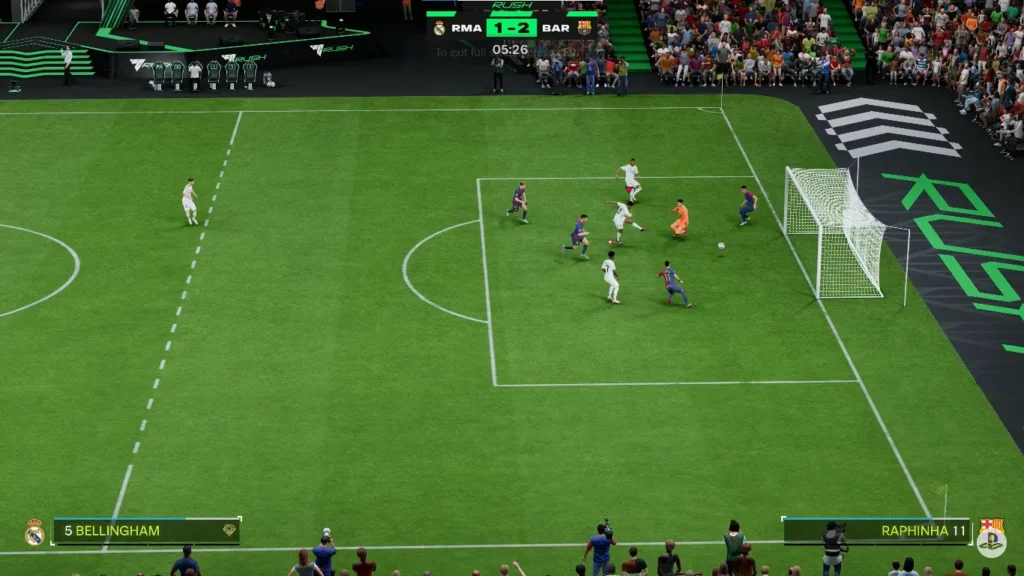
The title’s greatest innovation lies in its content. This year, Rush is introduced in all of the title’s game modes, with no exceptions. The concept is strongly inspired by the Kings League, a seven-man competition founded by former Barça defender Gerard Pique and made more popular by last summer’s Kings World Cup. Here, games are played 5 against 5 on a reduced playing field. The kick-off takes place with the players behind a line in the center of each side, and the ball is released in the middle of the field after a count.
Offsides are only whistled if they occur beyond the center line of the opposing team, meaning that they don’t count in the middle of the field. No red cards after a second yellow card, but a blue card excluding the player in question for one minute before he returns, and penalties are not kicked in a single shot: the player rushes from the center of the opposing side to drive the ball before facing the goalkeeper, and he’s pursued by all his opponents to put the pressure on him.
A real pleasure to play, and a worthy replacement for the VOLTA mode, it’s more realistic than its predecessor, and much better integrated into the various game modes, with much greater interest.
Tactical Depth in Career Mode, Limited Changes in Ultimate Team

In all the classic FIFA and EA Sports FC game modes, Rush is an opportunity to renew the experience a little. For example, in Ultimate Team, the famous card game, you can test your best cards online and complete objectives in this limited mode with up to 4 players, with the goalkeeper as an AI. Aside from this addition, the old FUT doesn’t really evolve.
The number of cards added last season and new playstyles for the goalkeepers are otherwise the rare arguments to convince players to renew the experience, which is open to micro-transactions. At launch, the basic cards make game building slower, but the special cards will certainly fill the decks of the most dedicated players, so you’ll need to keep up if you don’t want to lose track, as you do every season. Roles are present and represented by a + or ++ for each player card, depending on the proper positioning in the team, but we didn’t really manage to figure out the Ultimate Team contribution after three days of intense play.
The new roles system is much better implemented in Career mode when you play as a coach. The added depth in the tactical assignments of each member of your team is now a real pleasure, and will require several minutes or even hours, unless you want to copy the strategy of another famous coach, which is possible. FC IQ then takes on its full meaning, and it is now finally possible to play the manager of a women’s team, knowing that the Champions League is part of the game.
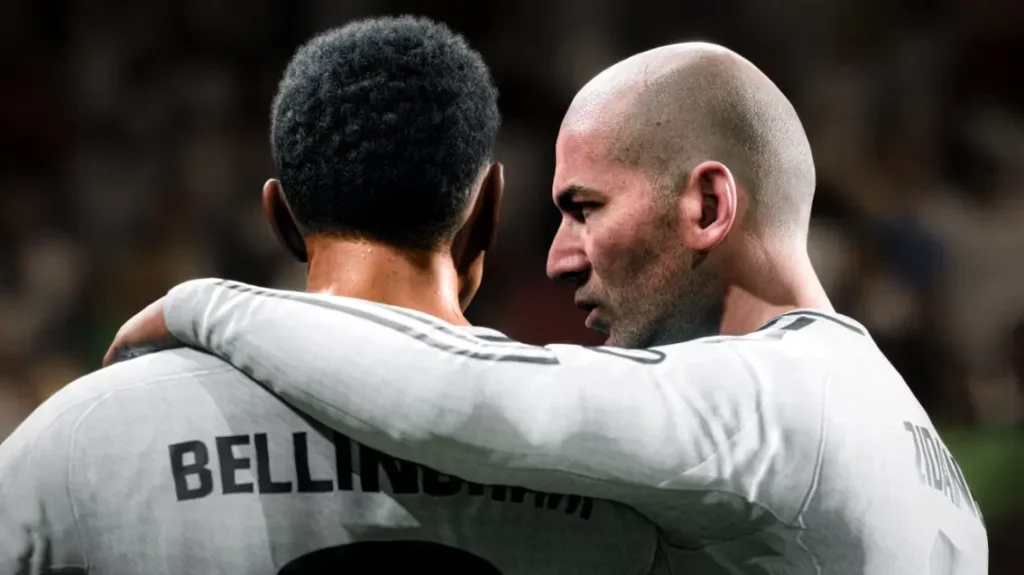
With Rush, the training center section is completed, as your juniors will play their tournaments in this form. We only regret the lack of modeled managers in Ligue 1, unlike the players (only Luis Enrique for PSG, and probably De Zerbi for OM, who will join him in a future update). The player version of Career mode is also fairly static in terms of innovations, although we did like the possibility of playing with an icon in the modern era (Zidane, Henry, Pirlo, Beckham…) or choosing the social background of your future star.
More Tactical Clubs
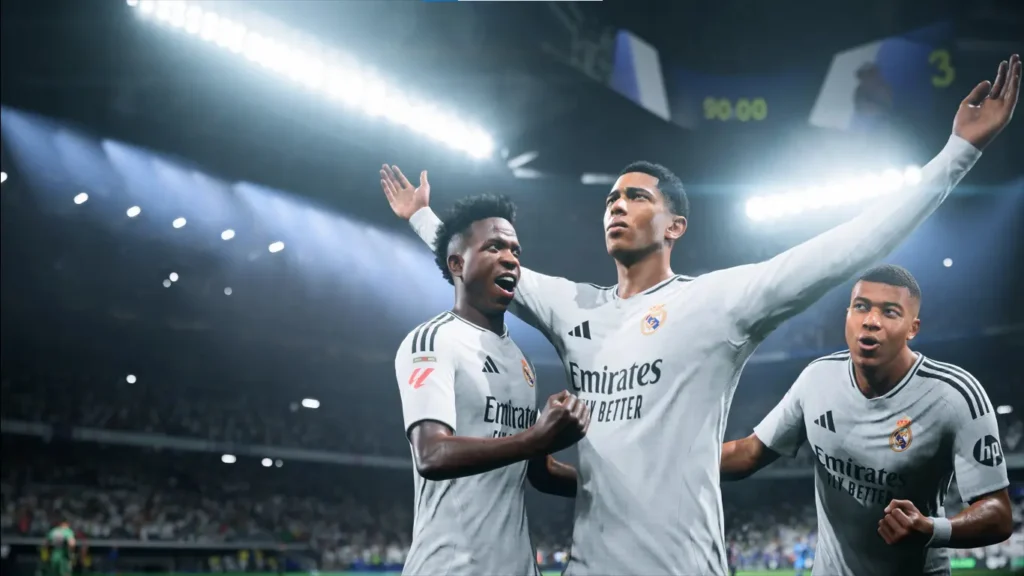
Unfortunately, Rush’s introduction for this reason sealed the fate of VOLTA mode, which has been completely removed from the game. Perhaps because it was considered too close to the concept of its successor, this disappearance is still a shame, since it offers more variety in terms of stadiums and scenery, as well as being more arcade-oriented and less head-scratching for some players who love the old FIFA Street games.
Also linked to Clubs mode (formerly Clubs Pro), where you only control your avatar in a team up to 11 vs. 11 online, Rush can be used to level up your player in shorter, more intense matches, enabling you to progress more smoothly, being more involved than in regular games with 11 players. A perfect, more tactical way to improve your attributes/playstyles and reach the top level of your club.
After all, once you’ve joined or built a team with your friends, you’ll have to play one match after another to move up from one division to the next and avoid relegation. Players not controlled by humans are managed by the computer or by the person controlling his avatar alongside the rest of the team, and this is where the mode’s great innovation comes in.
From now on, these secondary players, who usually have basic attributes common to all teams, can be customized at this level. You’ll need to allocate a budget, based on your club’s experience and results, to specific infrastructures or trainers to improve these players, making them more defensive, offensive, better at aerial play, and so on. Depending on your team’s tactics and play style, and with the help of FC IQ, things will certainly become more tactical than in past seasons in the best divisions of the mode.
Conclusion
FC 24 made some notable changes alongside its rebranding, particularly in gameplay, FC 25 has taken a different approach. This year’s major addition is Rush, a fresh 5v5 mode that’s well integrated across all game modes. The game introduces FC IQ, a tactical system for AI players that’s particularly useful in Career and Clubs modes for ambitious managers, but the overall gameplay hasn’t changed much from last season. Those who disliked the last opus may want to pass.
